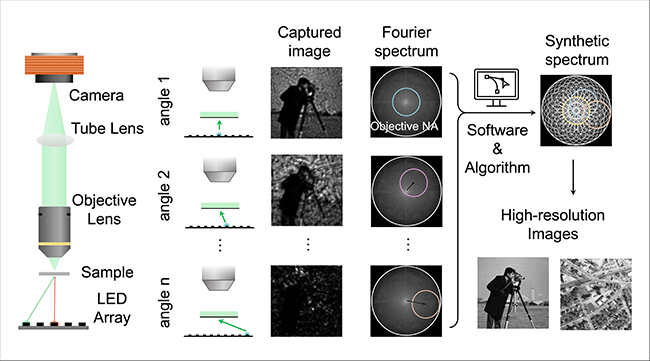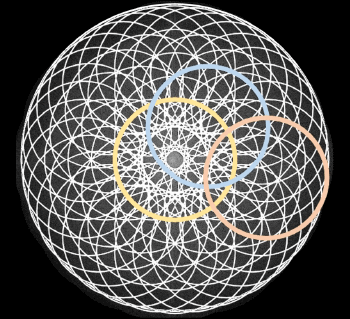
Projects
Computational Microscopy: A new way to integrate hardware and algorithms
Haowen Zhou (Division of Engineering and Applied Sciences), SASE Graduate Fellow
The field of optical microscopy is essential for biomedical research and clinical diagnostics, providing critical insights into cellular and tissue structures. However, the advancement of traditional optical hardware is increasingly limited by physical constraints. Computational microscopy, which integrates algorithms with optical systems, offers a solution by overcoming these limitations and enhancing the performance of existing microscopes. The Caltech Biophotonics Lab, led by Prof. Changhuei Yang (link https://biophot.caltech.edu/) , invented Fourier ptychographic microscopy (FPM), a next-generation technique that employs complex-field imaging, high spatial-bandwidth, and digital aberration correction. These innovations enable high-quality, high-resolution imaging, which are particularly valuable in fields like digital pathology, label-free cell imaging and microbiology.
To bridge the gap between complex image reconstruction algorithms and practical usage in clinical settings, in the collaboration with Schmidt Academy, Zhou aims to develop a software platform that unifies existing computational microscopy algorithms. The software will integrate diverse algorithms into a single system that is adaptable to various microscopy setups. This will allow pathologists and medical trainees to seamlessly process large batches of high-resolution histological images without needing to understand the underlying complex computational methods.
One of the primary challenges of this project is the integration of various image reconstruction algorithms into a flexible, user-friendly platform that works with different optical hardware configurations. This requires creating an adaptable software architecture that can automatically select the best algorithm based on the sample type, microscope setup, and user requirements. Ensuring this platform is intuitive for non-expert users, such as pathologists, adds another layer of complexity. By adhering to best practices in software engineering—such as modular design, robust documentation, and thorough testing—the software will offer a reliable and user-friendly interface. The goal is to facilitate the adoption of computational microscopy in both research and clinical practice, empowering medical professionals to make faster and more accurate diagnoses. This software platform will not only advance the state of the art in image reconstruction algorithms but also help to accelerate the commercialization of computational microscopy systems.

Figure caption: Principle of Fourier Ptychographic Microscopy.
Cover picture:
